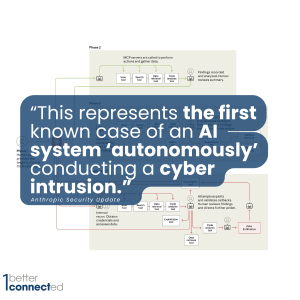High-speed connectivity essential for modern education is not just a statement; it’s a reality that has reshaped the landscape of learning in the digital age. As we navigate through the complexities of educating in the 21st century, the role of robust internet connectivity cannot be overstated. It serves as the cornerstone of educational equity, enabling access to a wealth of digital resources, facilitating immersive learning experiences, and supporting the global exchange of ideas. This fundamental shift towards a digitally connected educational environment highlights the critical importance of high-speed internet in fulfilling the promise of modern education for every learner, everywhere.
The Evolution of Educational Technologies
From the humble beginnings of chalk and blackboard to the advanced digital boards of today, educational technologies have undergone a significant transformation. The advent of the internet has revolutionised learning, enabling instant access to a wealth of information and resources previously unimaginable. This evolution underscores the pivotal role of high-speed connectivity in facilitating a seamless and enriched educational experience.
High-Speed Connectivity: A Definition
High-speed internet, often defined by its ability to transmit data at swift rates, is crucial in supporting the bandwidth-intensive applications and resources prevalent in today’s educational settings. Standards and benchmarks for high-speed connectivity continue to evolve, reflecting the growing demand for faster and more reliable access to online educational resources.
The Digital Divide and Its Impact
Despite the advancements in technology, the digital divide remains a significant barrier. Disparities in access to high-speed internet create unequal educational opportunities, affecting students’ ability to participate in digital learning environments and impacting their overall academic performance.
Enhanced Learning Experiences
High-speed connectivity facilitates a range of enhanced learning experiences. Interactive learning environments, supported by video conferencing and online collaboration tools, offer students the opportunity to engage with content in dynamic ways. Moreover, the ability to access a global repository of resources ensures that learners are exposed to diverse perspectives and knowledge bases.
The Importance of Real-Time Information
In an age where information is constantly updated, high-speed internet is essential for accessing real-time data. This immediacy enriches the learning experience, allowing educators and students to stay abreast of the latest developments in their fields of study.
Facilitating Remote and Hybrid Learning
The global shift towards remote and hybrid learning models has underscored the importance of high-speed connectivity. It enables the delivery of online courses and supports the diverse array of digital platforms and tools essential for distance education, ensuring that learning remains uninterrupted, regardless of location.
Multimedia Resources in Education
The integration of multimedia resources into the curriculum is made possible through high-speed connectivity. Videos, podcasts, and interactive simulations enhance the learning experience, catering to different learning styles and making complex concepts more accessible.
Collaborative Learning and Connectivity
High-speed internet facilitates collaborative learning experiences, allowing students to work together on projects and participate in virtual classrooms across geographical boundaries. This connectivity fosters a sense of community and encourages the exchange of ideas among learners worldwide.
Cloud Computing in Education
Cloud computing has become integral to modern education, providing scalable access to storage and software services. High-speed connectivity is essential for leveraging cloud-based resources, facilitating seamless access to educational materials and collaborative tools.
Virtual and Augmented Reality in Learning
Virtual and augmented reality technologies offer immersive learning experiences that can transform educational outcomes. High-speed connectivity is critical for these technologies to function effectively, enabling learners to explore virtual environments and simulations without latency issues.
The Role of Artificial Intelligence
The integration of artificial intelligence (AI) in the educational sphere vividly illustrates why high-speed connectivity is essential for modern education. AI technologies, from personalised learning paths to intelligent tutoring systems, rely on the seamless and rapid transmission of data. These innovative tools can adapt in real-time to the needs of individual learners, offering customised resources and support that enhance learning outcomes. However, the effectiveness of these AI-driven educational solutions is contingent upon the availability of high-speed internet connectivity. Without it, the potential for AI to transform educational practices and personalise learning at scale could remain largely untapped. Thus, ensuring robust high-speed connectivity not only supports but significantly amplifies the benefits of AI in education, making it a critical component in the pursuit of a more adaptive, responsive, and effective educational ecosystem.
Challenges and Solutions for Connectivity
Addressing the challenges of providing high-speed connectivity involves concerted efforts from both government and private sectors. Infrastructure development, policy initiatives, and investment in technology are crucial for overcoming these obstacles and ensuring equitable access to digital education.
Future Trends in Education and Connectivity
The future of education is inextricably linked to advancements in connectivity. Emerging technologies and pedagogical approaches will continue to rely on high-speed internet, shaping the educational experiences of future generations.
Addressing the Digital Divide
Efforts to address the digital divide must focus on ensuring equitable access to high-speed internet. Strategies include infrastructure development, affordable connectivity solutions, and educational programs designed to enhance digital literacy.
Conclusion
High-speed connectivity is not just a facilitator but a fundamental element of modern education. It enables a world where learning is boundless, inclusive, and continuously evolving. As we look to the future, the integration of advanced technologies and high-speed internet will continue to reshape the educational landscape, making it more accessible, engaging, and effective for learners around the globe.






